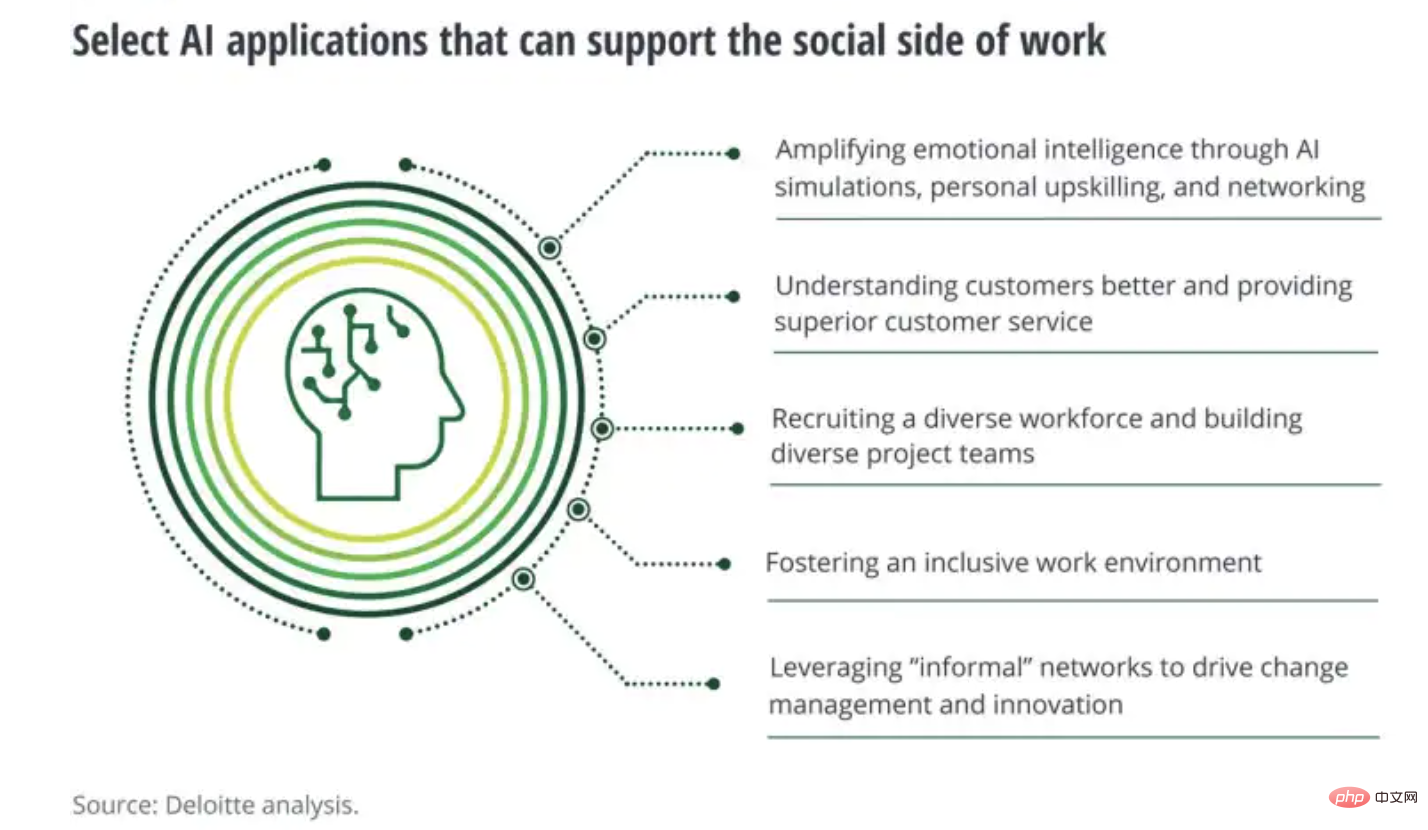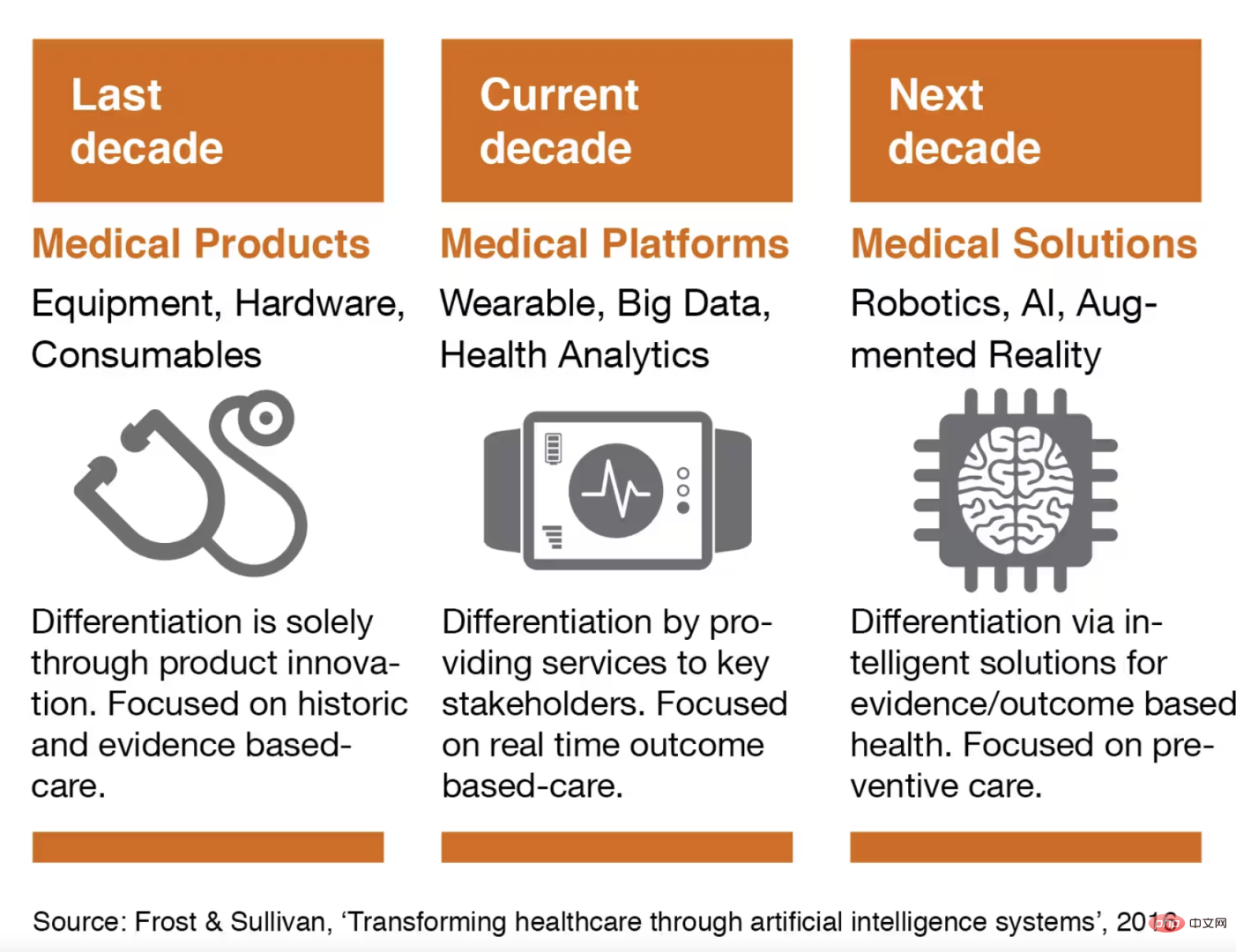 Technology peripherals
Technology peripherals
 AI
AI
 AI's role in empowering women: Breaking down barriers in education, healthcare and the workplace
AI's role in empowering women: Breaking down barriers in education, healthcare and the workplace
AI's role in empowering women: Breaking down barriers in education, healthcare and the workplace

#Machine learning is rapidly transforming every industry, from healthcare and finance to education and transportation.
One of the important outcomes of this technology is its impact on women’s lives, empowering them in various ways. As machine learning algorithms become more advanced, they can help women find new opportunities, break down barriers, and change the gender gap across different sectors.
In this article, we explore how machine learning in AI can empower women, from improving access to education and employment to creating more inclusive workplaces and enhancing women’s health and well-being.
1. Revolutionizing education

Source: McKinsey
Machine learning has Could revolutionize the education sector by improving access to quality education for women globally. With the proliferation of online education, women can now access courses and resources from anywhere in the world, regardless of their location or financial background.
For example, the popular online learning platform Coursera uses machine learning to personalize course recommendations based on a user’s interests and previous learning history. This would be particularly beneficial for women who may face cultural or social barriers to accessing education, as machine learning algorithms can help tailor educational resources to their specific needs.
Additionally, machine learning can help identify students who may need additional support or intervention, such as those who are struggling in specific subjects or falling behind in their studies. By using predictive analytics, educators can develop targeted interventions to support struggling students and ensure they stay on track.
2. Provide equal employment opportunities

Source: Deloitte
Machine learning also plays an important role in changing the employment landscape for women. By analyzing job postings and resumes, machine learning algorithms can identify and eliminate gender bias in the hiring process, thereby increasing the chances of women being considered for employment opportunities.
For example, Textio is a startup that uses natural language processing and machine learning to analyze job postings, detecting and removing gender-biased language to make job postings more gender-neutral. This helps attract more diverse candidates and reduces the gender gap in the workplace.
Additionally, machine learning can help identify job opportunities that are traditionally male-dominated but where women might excel. By analyzing job descriptions and performance data, machine learning algorithms can identify the skills and qualities necessary to succeed in a specific role and match them with potential candidates. This can help women find employment opportunities in areas they may not have considered before.
3. Changing access to health care

##Source: PwC
Machine learning is also transforming healthcare, with applications ranging from disease diagnosis and treatment to mental health and well-being. For women, machine learning has the potential to improve access to care and facilitate more personalized treatments. One area where machine learning is being used is breast cancer screening. Mammography is a standard screening tool for breast cancer, but it has limitations, especially for women with dense breast tissue. Machine learning algorithms can analyze mammograms and identify patterns that may indicate the presence of breast cancer, even in women with dense breast tissue. Additionally, machine learning can help identify individuals at risk for certain health conditions, such as heart disease or diabetes. By analyzing medical records and lifestyle factors, machine learning algorithms can predict an individual's likelihood of developing a specific disease, allowing for early intervention and prevention.4. Create an inclusive workplace

Source: Gartner
Machine learning is OK Play an important role in creating a more inclusive workplace where women can thrive and succeed. By analyzing employee data, machine learning algorithms can identify areas where women may face barriers or discrimination, such as promotions or pay disparities.
For example, global consumer products company Unilever uses machine learning to analyze employee data and identify areas where gender bias may exist. This has resulted in more women being promoted into leadership roles.
Additionally, machine learning can play an important role in empowering women in the workplace. Historically, women have been underrepresented in fields such as science, technology, engineering and mathematics (STEM). This has resulted in large gender gaps in these fields, with women making up only a small portion of the workforce. However, with the advent of machine learning, women now have more opportunities to succeed in these fields.
One way machine learning is empowering women in the workplace is through its ability to eliminate unconscious bias in the hiring process. Traditional hiring processes often rely on subjective assessments of candidates, which can be influenced by factors such as gender, race and age. This can result in qualified candidates being overlooked in favor of less qualified candidates who fit a particular demographic.
On the other hand, machine learning algorithms can be trained to eliminate these biases by focusing solely on a candidate’s qualifications and skills. This not only increases the chances of hiring qualified women, but also helps create a more diverse and inclusive workforce.
Another way machine learning is empowering women in the workplace is through its ability to automate repetitive and time-consuming tasks. This is particularly important in industries such as healthcare and finance, where women are overrepresented in executive and support roles. By automating these tasks, machine learning frees up women’s time, allowing them to focus on more strategic and high-value activities. This not only improves women’s job satisfaction and career advancement opportunities, but also increases organizational efficiency and effectiveness.
Machine learning can also empower female entrepreneurs by giving them valuable insights and analysis that were previously unavailable. For example, machine learning algorithms can analyze large data sets to identify trends and patterns that can inform business strategies and decisions. This is especially useful for female entrepreneurs who have limited resources and need to make data-driven decisions to maximize their chances of success.
Looking ahead
Machine learning has the potential to become a powerful tool that can empower women in every aspect of their lives, from education to healthcare to the workplace. By providing access to information, automating tasks and removing unconscious bias, machine learning can help level the playing field and create a more equitable and inclusive society for women. As machine learning continues to evolve and become more accessible, we must harness its power to support female empowerment and promote gender equality.
The above is the detailed content of AI's role in empowering women: Breaking down barriers in education, healthcare and the workplace. For more information, please follow other related articles on the PHP Chinese website!

Hot AI Tools

Undresser.AI Undress
AI-powered app for creating realistic nude photos

AI Clothes Remover
Online AI tool for removing clothes from photos.

Undress AI Tool
Undress images for free

Clothoff.io
AI clothes remover

AI Hentai Generator
Generate AI Hentai for free.

Hot Article

Hot Tools

Notepad++7.3.1
Easy-to-use and free code editor

SublimeText3 Chinese version
Chinese version, very easy to use

Zend Studio 13.0.1
Powerful PHP integrated development environment

Dreamweaver CS6
Visual web development tools

SublimeText3 Mac version
God-level code editing software (SublimeText3)

Hot Topics
 1377
1377
 52
52
 How to create oracle database How to create oracle database
Apr 11, 2025 pm 02:36 PM
How to create oracle database How to create oracle database
Apr 11, 2025 pm 02:36 PM
To create an Oracle database, the common method is to use the dbca graphical tool. The steps are as follows: 1. Use the dbca tool to set the dbName to specify the database name; 2. Set sysPassword and systemPassword to strong passwords; 3. Set characterSet and nationalCharacterSet to AL32UTF8; 4. Set memorySize and tablespaceSize to adjust according to actual needs; 5. Specify the logFile path. Advanced methods are created manually using SQL commands, but are more complex and prone to errors. Pay attention to password strength, character set selection, tablespace size and memory
 How to create an oracle database How to create an oracle database
Apr 11, 2025 pm 02:33 PM
How to create an oracle database How to create an oracle database
Apr 11, 2025 pm 02:33 PM
Creating an Oracle database is not easy, you need to understand the underlying mechanism. 1. You need to understand the concepts of database and Oracle DBMS; 2. Master the core concepts such as SID, CDB (container database), PDB (pluggable database); 3. Use SQL*Plus to create CDB, and then create PDB, you need to specify parameters such as size, number of data files, and paths; 4. Advanced applications need to adjust the character set, memory and other parameters, and perform performance tuning; 5. Pay attention to disk space, permissions and parameter settings, and continuously monitor and optimize database performance. Only by mastering it skillfully requires continuous practice can you truly understand the creation and management of Oracle databases.
 How to write oracle database statements
Apr 11, 2025 pm 02:42 PM
How to write oracle database statements
Apr 11, 2025 pm 02:42 PM
The core of Oracle SQL statements is SELECT, INSERT, UPDATE and DELETE, as well as the flexible application of various clauses. It is crucial to understand the execution mechanism behind the statement, such as index optimization. Advanced usages include subqueries, connection queries, analysis functions, and PL/SQL. Common errors include syntax errors, performance issues, and data consistency issues. Performance optimization best practices involve using appropriate indexes, avoiding SELECT *, optimizing WHERE clauses, and using bound variables. Mastering Oracle SQL requires practice, including code writing, debugging, thinking and understanding the underlying mechanisms.
 How to add, modify and delete MySQL data table field operation guide
Apr 11, 2025 pm 05:42 PM
How to add, modify and delete MySQL data table field operation guide
Apr 11, 2025 pm 05:42 PM
Field operation guide in MySQL: Add, modify, and delete fields. Add field: ALTER TABLE table_name ADD column_name data_type [NOT NULL] [DEFAULT default_value] [PRIMARY KEY] [AUTO_INCREMENT] Modify field: ALTER TABLE table_name MODIFY column_name data_type [NOT NULL] [DEFAULT default_value] [PRIMARY KEY]
 What are the integrity constraints of oracle database tables?
Apr 11, 2025 pm 03:42 PM
What are the integrity constraints of oracle database tables?
Apr 11, 2025 pm 03:42 PM
The integrity constraints of Oracle databases can ensure data accuracy, including: NOT NULL: null values are prohibited; UNIQUE: guarantee uniqueness, allowing a single NULL value; PRIMARY KEY: primary key constraint, strengthen UNIQUE, and prohibit NULL values; FOREIGN KEY: maintain relationships between tables, foreign keys refer to primary table primary keys; CHECK: limit column values according to conditions.
 Detailed explanation of nested query instances in MySQL database
Apr 11, 2025 pm 05:48 PM
Detailed explanation of nested query instances in MySQL database
Apr 11, 2025 pm 05:48 PM
Nested queries are a way to include another query in one query. They are mainly used to retrieve data that meets complex conditions, associate multiple tables, and calculate summary values or statistical information. Examples include finding employees above average wages, finding orders for a specific category, and calculating the total order volume for each product. When writing nested queries, you need to follow: write subqueries, write their results to outer queries (referenced with alias or AS clauses), and optimize query performance (using indexes).
 What does oracle do
Apr 11, 2025 pm 06:06 PM
What does oracle do
Apr 11, 2025 pm 06:06 PM
Oracle is the world's largest database management system (DBMS) software company. Its main products include the following functions: relational database management system (Oracle database) development tools (Oracle APEX, Oracle Visual Builder) middleware (Oracle WebLogic Server, Oracle SOA Suite) cloud service (Oracle Cloud Infrastructure) analysis and business intelligence (Oracle Analytics Cloud, Oracle Essbase) blockchain (Oracle Blockchain Pla
 How to configure Debian Apache log format
Apr 12, 2025 pm 11:30 PM
How to configure Debian Apache log format
Apr 12, 2025 pm 11:30 PM
This article describes how to customize Apache's log format on Debian systems. The following steps will guide you through the configuration process: Step 1: Access the Apache configuration file The main Apache configuration file of the Debian system is usually located in /etc/apache2/apache2.conf or /etc/apache2/httpd.conf. Open the configuration file with root permissions using the following command: sudonano/etc/apache2/apache2.conf or sudonano/etc/apache2/httpd.conf Step 2: Define custom log formats to find or



